
One Hundred Views of the Empire State Building #54
You Should Become a Fan of Sumo Part I
Ranked by popularity, here’s a list of sports in America:
- Football
- Baseball
- Basketball
- Ice Hockey
- Soccer
- Tennis
- Golf
- Wrestling
- NASCAR
- Badminton
- Whining on Twitter
We were promised rollerball and hunger games, but instead soccer is rising in popularity. Boxing and chess were popular when I was a kid, but now deteriorated so much that nobody even knows who is the current world champion.
I feel that to be watchable a sport needs to have following things:
- A ritualistic, meditative aspect
- Strategy
- Skill
- Violence
- Fast pace of scoring
- Drama
- Fashion
- Strong, relatable personalities
All of these sports have something going for them. Football is rightly at the top of the list: it is chess that is played by giant men giving each other concussions. Baseball is highly meditative: watching overweight men scratch themselves and spit on the ground is somehow very calming. Hockey is also good because of violence and the quick pace. Basketball provides quick action with a lot of scoring. Tennis is also fast paced, with a lot of grunting and weird noises. Soccerists run around a lot, but there is no scoring. They do get injured a lot and roll on the ground, but sometimes injuries are faked. Golf is a game of incredible skill, but not much else. NASCAR has fiery explosions. Wrestling has all the drama, strong (if fake) personalities, and also explosions. Badminton does not belong on this list, it’s stupid.
Now, let me introduce you to the world of Grand Sumo. It has e-ve-ry-thing. It is the perfect sport to follow. You should become a fan, and here’s why.
If you have some past perceptions of what sumo is like given to you by the American media, forget them. Let’s start with some basics, which you probably know, but not exactly.
Firstly, sumo is performed on something called a dohyo. Dohyo is a clay mound meticulously put together by artisans for every competition known as “basho”. It is a sacred place within which lives a deity. A special snack of dried squid and sacred sake is placed in the hole in the center of the dohyo during the consecration ceremony. Above the dohyo floats a magnificent temple structure, a true marvel of engineering.
Here is how dohyo is constructed by yobidashi (special sumo porters and announcers). It is really worth a look, the level of craftsmanship is out of this world. My favorite part is that they traditionally use beer bottles to form the straw bales.
You might find that beer bottles are used in other sumo tasks, like ironing the mawashi belts. Sometimes they are involved in less wholesome ways (there is a lot of drama in the sumo world). But beer is important, because, you see, the whole thing is a giant fertility festival.
Sumo wrestlers are amazing athletes, but they are also magical strongmen and good luck charms. They look like giant babies in their outfits, and are often given crying babies to hold for good luck. A handshake from a sumo champion transfers powerful magical energy.

Unlike lazy American athletes, rikishi constantly work to keep bad luck and evil spirits out, and to ensure a good harvest. They perform an endless stream of ceremonies, that are simply hypnotic. First, there is dohyo iri, the ring entering ceremony. It is performed by all active yokozunas — the grand champions of the sport and vessels for powerful kami spirits that live in their belts. The crowd yells “yosh”, a word of encouragment meaning “all right, let’s go” that is usually uttered when somebody is about to do something difficult, when the yokozuna stamps his feet to drive out evil spirits that live in the ground.
At the end, a specialist called a yumitori performs a bow twirling ceremony. If those evil spirits made their way back into the ground, they will surely be gone when the yumitori will dig them out with his bow. It is my favorite part of all the demon fighting.
To make sure that the ground and aerial evil demons are properly oppressed, sumo wrestlers stomp their feet, throw salt, and clap their hands before each bout. They also sip and spit special power water and cover their mouths with special power paper. You will feel your mind calming down as those demons run away in terror.
The salt throwing itself is amazing: all wrestlers have different styles. Some throw a huge amount, some a very small, some have an insanely elegant throw.
Now that we are done with fighting demons, let’s talk about the bouts themselves. By the way, there are sumo streams that cut out most of the ceremony, so you can concentrate on the fighting.
Let me say this: this sport is brutal. To begin, wrestlers simultaneously launch at each other from a crouching position, like the American football players. All of this takes place on a terrifyingly high clay platform. You are allowed to slap, trip, and throw your opponent. You are not allowed to punch, poke, head-butt, or grab hair, but that is all.
Some wrestlers that are typically not expected to rise in the ranks often perform a highly choreographed comical skit explaining the forbidden moves.
Wrestlers are generally either belt fighters or pusher-thrusters, but some are all around technicians. The slaps of pusher thrusters are particularly terrifying — they often knock wrestlers out. Think Honda from Street Fighter, but for real, like in those slapping competition videos. Also, it’s done with both hands, not one animated one.

To win you must either push your opponent out of the ring, or make them touch the ground with anything other than the soles of their feet. This is why sumotori usually consider chicken to be a lucky food. Two legs good, four legs bad!
The winning ways known as kimarite are highly codified. Special ringside judges announce not only who won, but also how. Some winning techniques are very difficult and rare, some are commonplace. There is a special technical prize for fighters who display the most kimarite during the basho. Some ways of winning are considered to be cheap, like the slapdown. One move — jumping out of the way of the attacker known as “henka” is particularly frowned upon and villified, unless practiced by a much smaller wrestler against a giant opponent, and even then it’s considered not entirely honorable, but entirely legal.
Now let’s address the elephant in the room. There are no weight categories in Grand Sumo. But it is not just a sport of giants. There are plenty of very popular diminutive wrestlers.
To be continued in Part II
The Soviet Cloning Machine
Recently I saw this meme on twitter:

The genius who ripped this meme from Reddit also brought up Soviet cars as examples of originality, and that really annoyed me. For you see, one of the hallmarks of the Soviet socialism was flagrant disregard for intellectual property. To this day people of my generation are constantly surprised when they discover what exactly was copied and from what.
Here’s a exhaustive list of very iconic Soviet things and their capitalist counterparts.





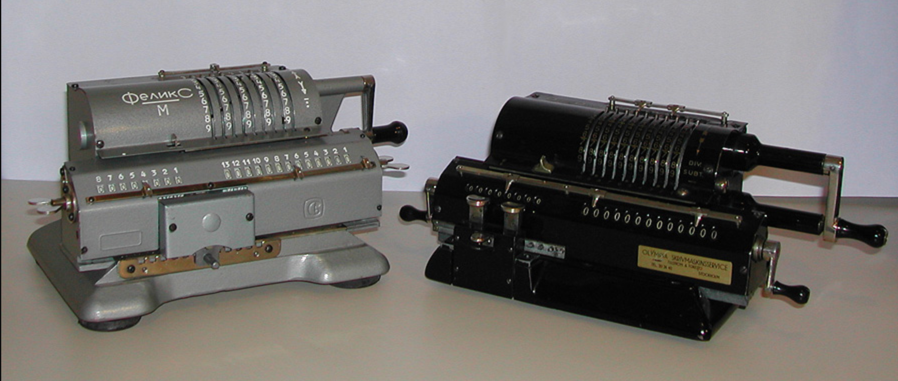
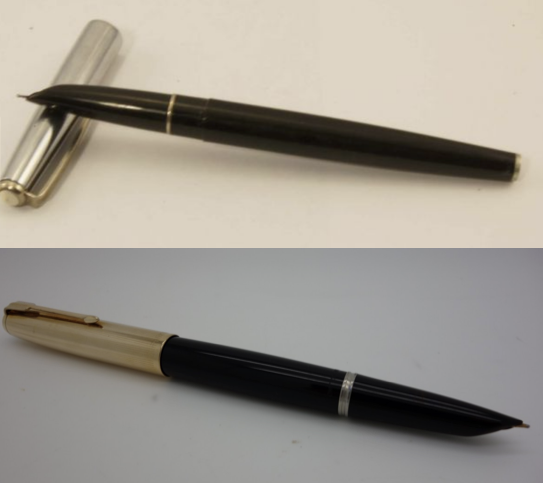


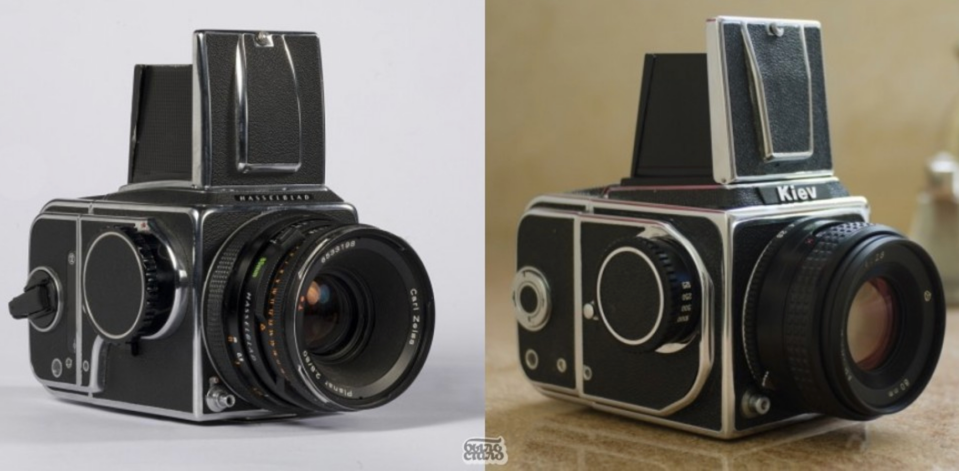


I’d actually like to build a more exhaustive list of these, but for now this will do.
Victorian Echoes
It’s story time, kids. As many of you know, I grew up in the Soviet Union in the 1970s and 80s. Cutting edge technology at the time was a decade or two behind the rest of the world, but I’m not going to bore you with tales of reel-to-reel audio, rotary phones, giant computers, record players, super 8 home movies and the rest of hipster-friendly junk. I want to tell you about the remnants of Victorian tech that I remember, ghostly things that still held on a little in the collective memory of Soviet people. These were all ingenious things, the iPhone-level tech of the time.
When I started school, fountain pens were mandatory. The pen itself is interesting enough — it was a poorly made, cheap Soviet clone of a Parker 51, a futuristic looking pen with a hooded nib, an ingenious design that is not seen much in modern fountain pens. When you think of a typical fountain pen it has a large, exposed nib that dries out very quickly. There’s a joke about the aesthetics of circumcision in there somewhere, but that’s not the point that I was trying to make at all.
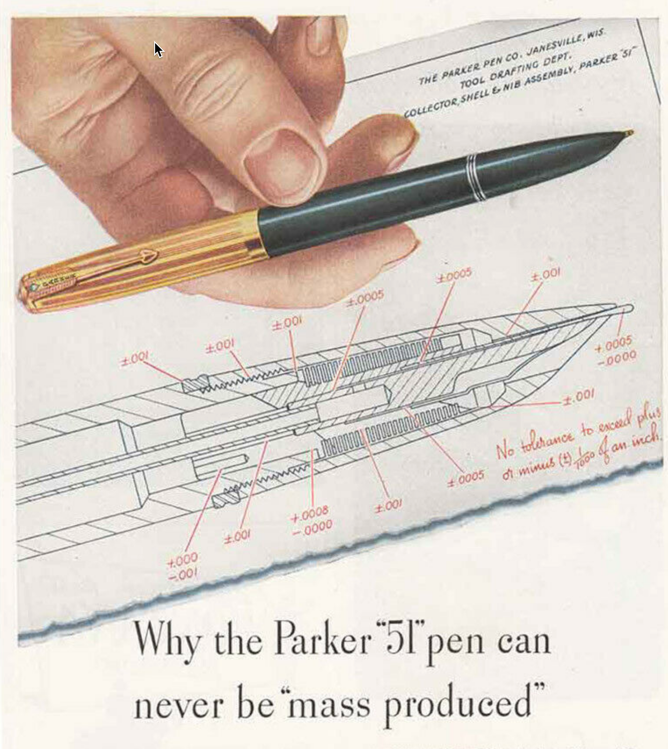
The point is that my desk still had inkwells for dip pens, an archaic bit of technology. My father, who went to the same school actually learned how to write with these dip pens. Steel nibs allow for a much finer penmanship (look up some examples of Spencerian and Copperplate calligraphy styles on YouTube — you won’t be disappointed).
Soviet post offices still used to provide these inkwells and steel pens well into the 1980s. Weirdly enough, I think these persisted in post offices in America into the 80s as well. I can’t find any evidence to that online, but I’ve seen a cartoon in Mad magazine about it.

Next up is an opera hat. I, of course, have never seen one in person, but Old Lady Shapoklyak, the sworn enemy of the Soviet Pokemon Cheburashka wore one and was named after it. Here she is wearing what might look like a normal old lady hat, but it is a chapeau claque, a collapsed opera hat, the one that makes a satisfying sound when it expands.

It’s more of a fwooomp than a clack, but OMG what a crazy piece of tech. I badly want to actually take one of these to the opera, expand it afterwards and hear that sound.
Then there’s another children’s character, the terrifying Moydodyr. These days he’s a friendly modern sink that promotes good hygiene. Sometimes he carries around a giant toothbrush, just like our future president, Vermin Supreme. But not in my time! Oh no, he used to be a terrifying Victorian-style washbasin.

It bears explaining on how this piece of furniture used to work. In the days before indoor plumbing (many Soviet households in the 1960s fell into that category) would have what looked like a normal sink, but water would be stored in a little tank with a spring-loaded plunger at the bottom. You’d press on this plunger and water would drip down on your hands, down into the sink, and into a bucket that was under it. I have seen a similarly designed soap dispensers in old buildings in NYC. You might ask — but how did people shower? Well, they did not. Once a week they’d visit a bath if they were lucky. They’d also had shirts with detachable cuffs and collars, and sometimes even whole shirt fronts — the ones that you can see roll up comically in old cartoons.
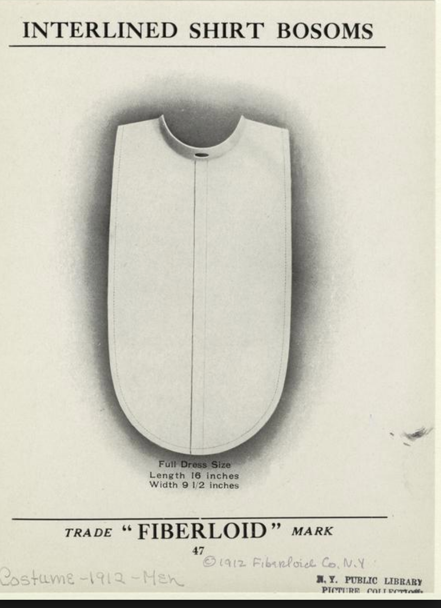
It’s also worth mentioning that my dad’s generation did not have proper gas stoves — all the food was prepared on Primus burners. I’ve only read about these in books, but with the magic of YouTube we can see how they worked. Cooking on pressurized kerosine is pretty hardcore.
I’ve also seen a lot of oil lamps converted to electricity. It is pretty interesting to see that the technology of these things became so refined that Aladdin lamps are still being made. Actually seeing how one works is very interesting – I am fascinated by the design of that glass chimney that makes it glow so bright.
Everything old is new again: WeWork is bringing back communal apartments, maybe galoshes will become all the rage in Williamsburg.
The Dummy Transistor Effect
Marketing technology is a dirty job. One pattern emerges over and over: hyping up the presence of some technology whether it makes sense or not, as long as it sways some consumers.
Early transistor radios always prominently featured the number of transistors everywhere, and I've heard the tales of Japanese companies including extra ones just to up the count.
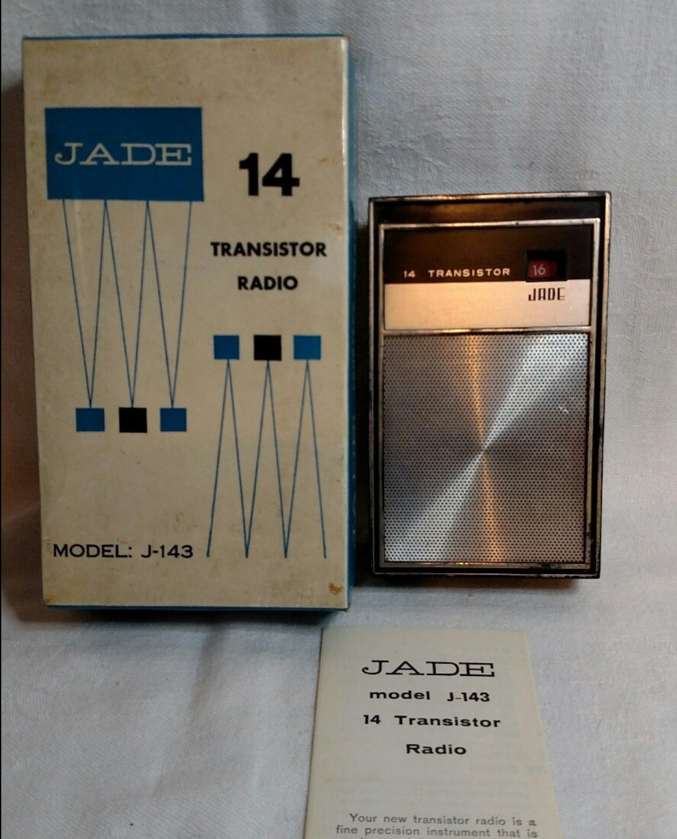
I always thought that was just a legend, but a quick search turned up this amazing article from Billboard. In 1967 the FTC held hearings on the subject:
The clearest thing to come out of the Commission’s recent oral hearing on the “wild numbers rat race” in transistor advertising was that the whole issue is pretty cloudy. It also appeared that future developments in the complexities of engineering and design will make it even more so.
…
At the Oct. 4 oral hearing, Harry Gelbert, of Excello American Industries, a New York importer who sells to chain stores, department stores, retailers and wholesalers, said his company had to discontinue sales of “fraudulently” stamped transistor sets from a certain Japanese firm which stamped sets as having 14 transistors, when they had only six. Some had “dummy” and “tandem” transistors, some did not even bother to include dummies.
Gelbert said his retailer and wholesaler customers, deceived by numbers claims, complained when discounters would advertise a 14-transistor set for $2.95, when Gelbert’s firm had to charge $3.20 for a six-transistor set. A spokesman for EIA’s Japanese affiliate said the Japanese government had “censured” the offending firm, that standards were continually being raised on Japanese product, and he was sure there would be very little of this kind of trouble in the future.
But importer Gelbert said the "fraudulently" stamped sets were still pouring in “by the thousands” from Korea, Hong Kong and Okinawa.
Billboard, October 28 1967
I bet Mr. Gelbert sported wicked sideburns and the "censuring" by the Japanese government was most severe.
Another case in point is this amazing article from Wikipedia about the Jewel Inflation of 1960s.
It is doubtful whether adding jewels in addition to the ones listed above is really useful in a watch. It does not increase accuracy, since the only wheels which have an effect on the balance wheel, those in the going train, are already jeweled. Marine chronometers, the most accurate portable timepieces, often have only 7 jewels. Nor does jeweling additional wheel bearings increase the useful life of the movement; as mentioned above most of the other wheels do not get enough wear to need them.However, by the early 20th century watch movements had been standardized to the point that there was little difference between their mechanisms, besides quality of workmanship. So watch manufacturers made the number of jewels, one of the few metrics differentiating quality watches, a major advertising point, listing it prominently on the watch's face. Consumers, with little else to go on, learned to equate more jewels with more quality in a watch. Although initially this was a good measure of quality, it gave manufacturers an incentive to increase the jewel count. Around the 1960s this 'jewel craze' reached new heights, and manufacturers made watches with 41, 53, 75, or even 100 jewels. Most of these additional jewels were totally nonfunctional; they never contacted moving parts, and were included just to increase the jewel count. For example, the Waltham 100 jewel watch consisted of an ordinary 17 jewel movement, with 83 tiny pieces of ruby mounted around the automatic winding rotor
Wikipedia
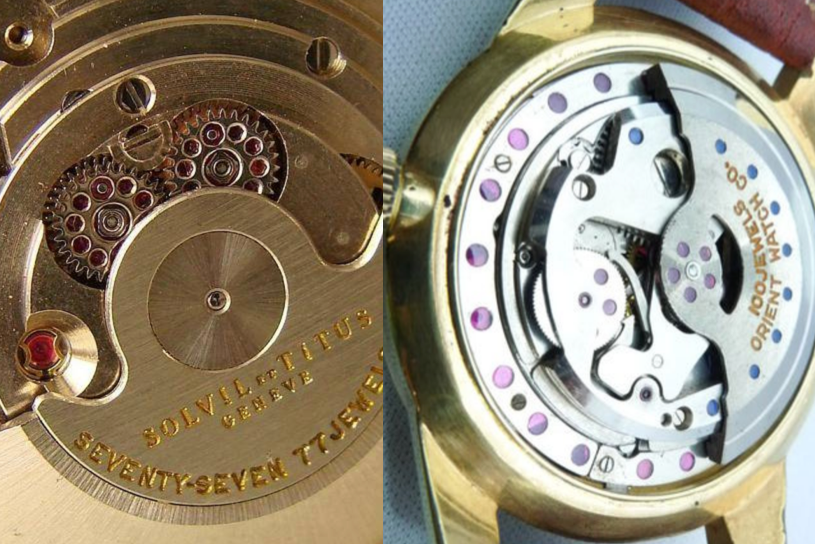
Adding gratuitous jewels to watches or transistors to radios might seem quaintly outdated, but I've encountered this technique in technology over and over in my career.
Once I was told of a project where the boss was enamored with a Microsoft product called BizTalk Server. I was never able to figure out what exactly it did back then (it appeared to be an XSLT transform engine of some kind), but it was marketed with gusto by Microsoft reps. It seems to exist today, and by jingo it has everything that you could want out of a piece of software: connect seamlessly, extend to the cloud, and go beyond integration. You wouldn't want a seamy connection, or extend a little lower than the cloud cover, or dammit, just simply reach integration and stop there.

The Microsoft consultants who actually had to do the work used normal Microsoft products, like SQL Server and .NET to accomplish the tasks that they needed, but at the end they simply installed BizTalk and left it sitting there, not doing anything.
At the time I had to work with Microsoft SharePoint Server, an awful, awful monolithic conglomerate of awfulness. Developing native code for SharePoint was ridiculously difficult. But it had one component that everybody used to get out of having to write native code: an iframe that would let you write a little web app outside of Sharepoint and seamlessly bring it inside. Seamlessly, like BizTalk.
There's no limit to how much you can manjazzle your product these days. Cloud, Big Data, AI, Blockchain, Augmented Reality. I just think we need to start counting the clouds, and the datas, and say exactly how many crypto links are there in the block chains. The singularity is nearer and nearer with each day.
Elevator Wisdom Part 2: Elevators From First Principles or The Fractal of Underestimation
Behold this Twitter exchange. If you read my previous post, you can spot the surety of someone who thinks he knows something, but kinda does not.
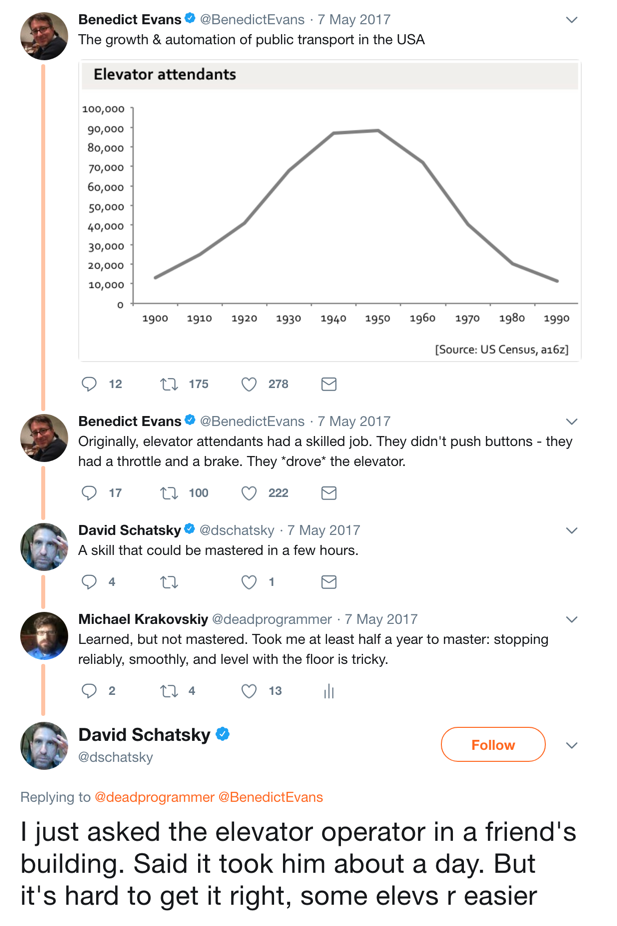
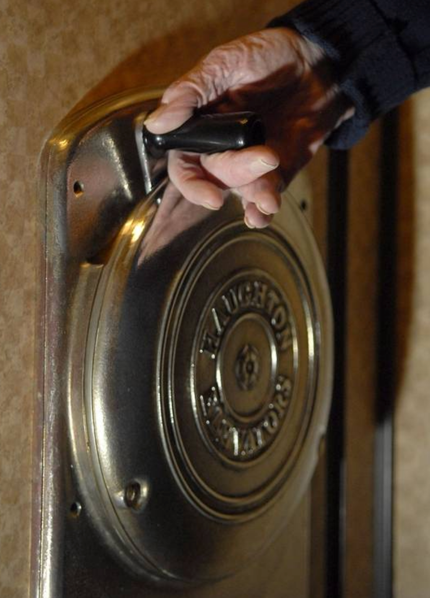
Manual elevators do not have a throttle and a brake in the same sense a car does. They have what's known as a deadman, a spring-loaded lever that can move the car up or down at two speeds and stop is when returned to the middle position. It's not like driving a car or even a bike.
Secondly it is indeed true that the skill could be learned in a few hours. You can start your training in the morning, and by the end of the day do it well enough to work through a shift. But by no means does it mean that you can master this esoteric skill in a day. Mastering this skill takes years, decades, in fact.
Here's a typical elevator operator. Watch how smoothly he operates the controls, how he does not need to adjust the floor level several times, how practiced he is. To learn to smoothly stop level with the floor 99% of the time takes a lot of practice, and even when missing the mark, correcting smoothly is a hard skill to learn. You can stop higher, you can stop lower, you can miss the floor entirely. There are two speeds, you can switch to a lower speed too soon, or you can jolt the car by stopping too abruptly. Muscle memory does not develop in a few hours.
Beyond that, there are esoteric skills that are best not attempted by amateurs. For instance, the faster way to stop the elevator is to open the inner accordion door. You can time this maneuver with exact lining up off the floor and the car, and very elegantly increase the overall speed of operation without sacrificing the smoothness of the ride. A rougher, but more impressive maneuver involves stopping by reversing the lever — it is the fastest way to stop, but it supposedly damages the cables, although I saw oldtimers perform that trick from time to time. But most mind boggling is the consistency with which someone with 40 years of experience can stop the car exactly level every single time while keeping up the conversation and keeping an eye on the annunciator.
A skill seems complicated to someone who's ignorant of it, it seems too simple to someone with cursory knowledge, and complicated again to someone who has a good deal of experience with it. It's like some kind of a bike shedding fractal, I swear.
Elevator Wisdom Part 1: The Fear Ouroboros

Ignorance is bliss, and knowledge brings fear. Or sometimes it's the other way around.
There are three levels of fearing or not-fearing something: out of ignorance, out of shallow knowledge, and out of deeper knowledge and experience.
I was once afraid of entering or exiting an elevator that did not come to a stop exactly level with the floor. If such a thing happened, it would stand to reason that the elevator was malfunctioning, and could possibly start moving once again when I'd be half-way in or out. My mind would paint gruesome pictures of being cut in half.

Then, when I was in college, I worked as a manual elevator operator. I was in charge of a hulking Otis elevator that was built some time in the 1920s. In the course of my training I learned about Elisha Otis' ingenious safety mechanism.
This finely bearded gentleman invented an extremely simple mechanism. An elevator would have a spring-loaded device that would extend special claws into the notched guide rails if the elevator would fall too quickly. In addition to that, a safety switch turned off power to the motor when the doors were open. In the following years I was not afraid of being cut in half, and bravely dismounted my elevator in any position.
Later on, working an office job in Midtown, I heard horrible news. An advertising executive tried to "catch" an already closing elevator by forcing her body inside. Instead of remaining motionless, the cab lifted her and squished her against the shaft, nearly cutting her body in half. The elevator remained jammed for several hours with two more people inside.
My first reaction was — this is impossible! The cutoff circuit, the safety device — what happened? What I learned, of course, was that technicians are able to override safety setting with jumper wires and put the elevator into a manual mode. Of course, sometimes they forget to remove the jumper wires, and an elevator can squish you as a bug if you try to force your way in. Now I am terrified of elevators once again, but for a different reason, of course.
Out of the three types of engineers, Mort is fearful because he's ignorant, Elvis is overconfident because he thinks he knows things, and Einstein is fearful and paranoid because he has an idea about how the sausage is made.

In UNIX, I learned with power-greedy pleasure that you could kill a system right out from under yourself with a single command. This power was almost the first thing anyone teaches you not to do, then, with a devilish glee, tells you exactly how to: run as the user with complete systems permissions, go to the root level of the disk directory, then type in rm -rf *.
Ullman, Ellen. Life in Code: A Personal History of Technology (p. 43).
The second blog post in this series will focus on the very non-obvious learning curve of driving a manual elevator.
The mystery of the Arizona Tea Girl
Who drew it better — Utamaro or the artist who did Arizona's graphics?

Happy New Year!

I don’t know if anyone is still reading this blog, but here’s the latest digital (and prophetic) New Year’s card. This was a good year, and things are looking good for 2015. I’ve lost most of the weight that I gained in the previous 5 years, got a new job, completed a number of interesting projects.
Happy New Year!
